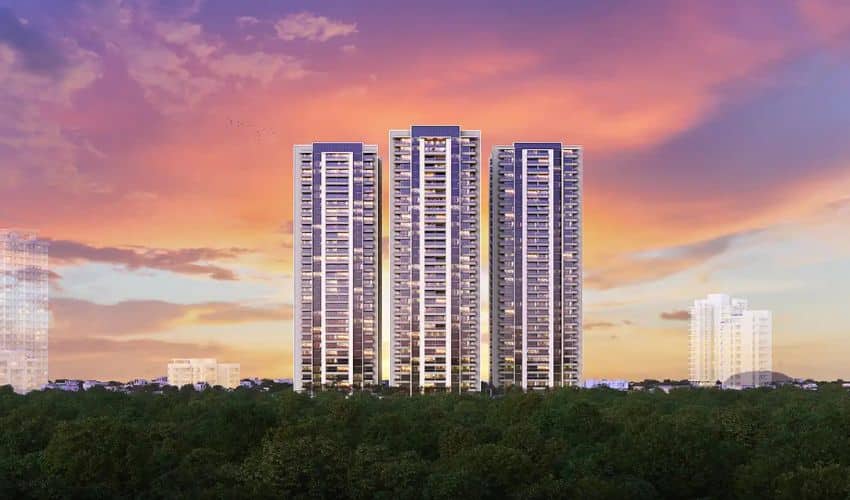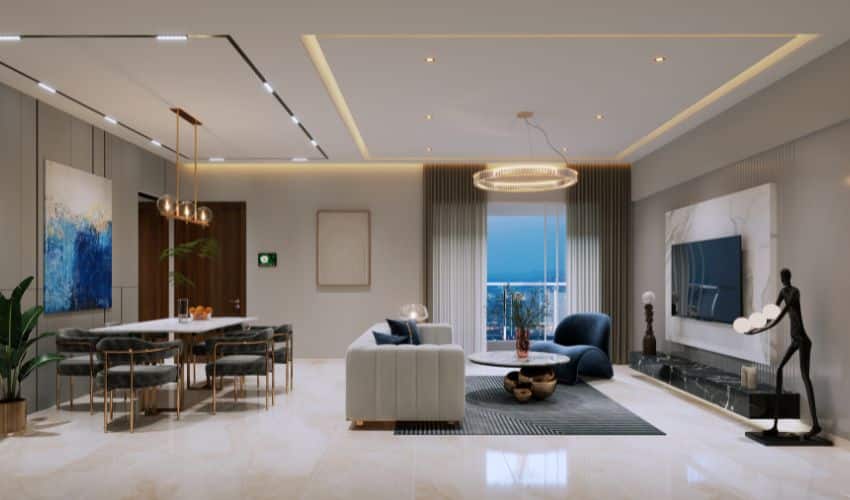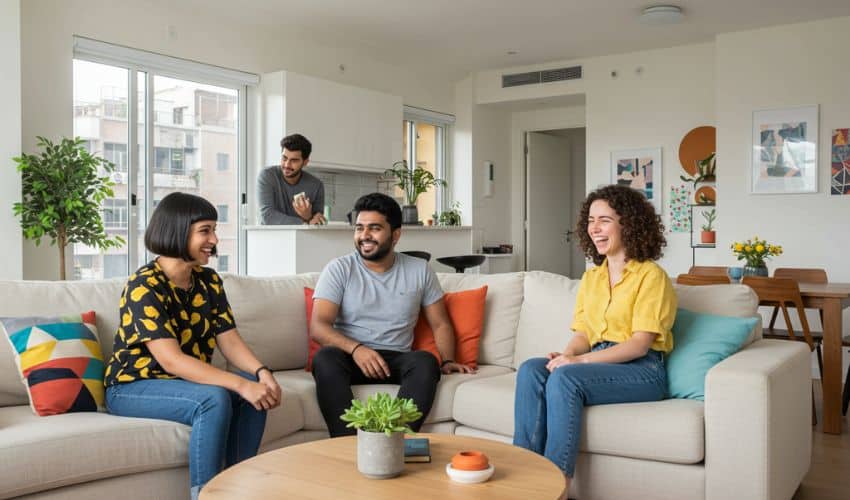
Cost of Living Pune 2025: Cost Breakdown for Families & Pros
Pune, known for its dynamic lifestyle and strong employment ecosystem, attracts students, working professionals, and NRIs alike. The cost of living in Pune is influenced by various factors such as rent, food, transport, and utilities. The average cost of living in Pune for 2025 depends on lifestyle, accommodation choices, and the area you choose to live in. With an increasing number of IT, education, and service sector opportunities, the city is often hailed as one of India’s most liveable metros. But what is the true Pune living cost in 2025? This post offers a breakdown to help both individuals and families budget wisely by understanding their monthly living expenses and overall living expenses while enjoying the best this city has to offer.
Living Costs: Rent, Groceries & Utilities

Monthly rent, housing costs, and rental prices in Pune vary significantly depending on the area, property type, and amenities.
Let’s look at current market estimates (March–May 2025):
| Expense | Solo Professional (₹/mo) | Family of 4 (₹/mo) |
|---|---|---|
| Rent (2 BHK) | 18,000–25,000 | 25,000–40,000 |
| Groceries/Food | 5,000–7,000 | 12,000–18,000 |
| Utilities* | 2,500–3,500 | 4,500–6,000 |
| Internet/Bundles | 700–1,200 | 1,000–1,500 |
| Transport** | 2,000–3,500 | 4,000–6,500 |
| Lifestyle (eating out, gyms) | 4,000–6,000 | 10,000–15,000 |
| Total Essentials | 32,200–46,200 | 56,500–86,000 |
*Monthly rent typically requires a security deposit of 2–3 months’ rent, depending on the locality and property type.
*Utilities include electricity bills, which are a major component of monthly utility costs, along with water and gas.
*Groceries/Food row covers both groceries cost and grocery costs. Monthly grocery expenses can range from ₹5,000–7,000 for singles to ₹12,000–18,000 for a family of four, depending on household size, dietary preferences, and market conditions.
Source : nobroker.in
*Includes electricity, water, gas **Rideshare, municipal bus, occasional cab
The average living cost in Pune, including daily expenses, ranges from ₹32,200–46,200 for solo professionals and ₹56,500–86,000 for a family of four.
Transportation and Commuting Costs
Getting around Pune is both convenient and cost-effective, thanks to its expanding public transport network. The city’s municipal buses and the new metro lines provide reliable options for daily commuting, with a monthly public transport pass typically costing between ₹1,200 and ₹1,800. Metro fares are affordable, ranging from ₹10 to ₹40 per trip, making it easy to travel across key areas. Auto rickshaws and taxis are widely available for shorter distances, with base fares starting at ₹20. For those who prefer the flexibility of personal vehicles, fuel prices average around ₹104.53 per liter for petrol and ₹95 per liter for diesel, so your monthly expenses will depend on your km fuel consumption. Overall, transportation costs in Pune are manageable, with most residents spending between ₹3,000 and ₹6,000 per month on commuting, making it easier to plan your monthly budgets.
Solo Living vs. Family Costs
- Solo Professionals: With ₹35–45k/month, you can live comfortably—covering rent in upcoming projects in Pune, decent meals, transport, and modest leisure.
- Families: To maintain a quality lifestyle, including decent housing near schools, gyms, and weekends out, ₹60–80k/month is the realistic range.
Source : nobroker.in
Best Affordable vs. Premium Neighborhoods
Affordable Sectors
- Undri, Wagholi, Kiwale—renting 2 BHK for ~₹18k; grocery and utilities are moderate.
- NIBM, Kharadi (emerging pockets)—slightly higher rents (~₹22–25k) with better connectivity.
Premium Areas
- Koregaon Park, Kalyani Nagar, Baner—rents range ₹30–45k with more upscale amenities, but at a higher cost.
Real Estate Insights: Renting vs. Buying

Considering property in Pune? Here are quick investment stats: If you’re interested in how infrastructure is shaping property values, learn more about infrastructure development driving real estate growth in Pune.
- Mid-range areas (Wagholi/Kiwale):
- 2 BHK costs ₹50–60 lakh (₹4,500–5,500/sq ft).
- Expect 5–8% annual appreciation and rental returns of ~3–4%.
- Premium areas (Koregaon Park, Kalyani Nagar):
- 2 BHK starts at ₹1.5 crore (₹12,000-₹15,000/sq ft).
- Steady and consistent appreciation.
Source : nobroker.in
Lifestyle Costs and Entertainment
Living in Pune means access to a diverse range of entertainment options and lifestyle amenities. The city offers everything from trendy cafes and fine-dining restaurants to bustling shopping malls and multiplex cinemas. Pune’s nightlife is lively, with plenty of bars, pubs, and clubs catering to young professionals and students. For those who enjoy staying active, gym memberships are widely available and fit various budgets. On average, a single person can expect to spend ₹5,000 to ₹10,000 per month on lifestyle and entertainment expenses, including outings, fitness, and leisure activities. Families may allocate between ₹10,000 and ₹20,000 monthly for similar costs, depending on their preferences. Whether you’re exploring local street food, catching the latest movie, or joining a fitness class, Pune offers entertainment options to suit every budget and lifestyle.
Cost-Saving Tips for New Residents

- Shared flats reduce rent drastically.
- Cook at home, shop in local markets.
- Use public transport and avoid daily autos/taxis.
- Bundle packages for internet + cable.
- Choose projects with CSR amenities like community gyms or co-working spaces.
Living Costs Comparison with Other Cities
When compared to other major cities in India, the cost of living in Pune is relatively lower, making it an attractive choice for many. The average rent for a one bedroom apartment in Pune ranges from ₹15,000 to ₹25,000 per month, which is considerably more affordable than similar properties in Mumbai or Delhi. Groceries, transportation, and healthcare expenses are also generally lower in Pune, allowing residents to enjoy a comfortable lifestyle without the higher cost associated with other metros. However, it’s important to note that living costs can vary within the city—premium areas like Koregaon Park and Kalyani Nagar command higher prices for rent and lifestyle amenities. Overall, Pune offers a balanced lifestyle with a lower cost of living compared to other major cities, especially for those who choose neighborhoods that fit their financial plan.
Should You Rent or Buy?
- Rent when you’re unsure of long-term stay or career moves.
- Buy if stable for 3+ years and budget allows—low-interest EMIs are similar to rent payments.
The Final Word: Can You Live Comfortably in Pune?
Absolutely—With ₹35–50k/month you can enjoy a quality lifestyle depending on location and personal habits. Pune’s evergreen charm, combined with diverse projects in Pune, makes it more liveable than many metros—and not excessively expensive
FAQs
1. Is ₹50,000 enough to live in Pune as a single professional in 2025?
Yes, ₹50,000/month is sufficient for a single working professional to live comfortably in Pune. It covers rent for a 1–2 BHK in mid-range areas, groceries, utilities, transport, and some leisure. Budget-conscious individuals can reduce expenses further by opting for shared accommodation and cooking at home.
2. What is the average monthly cost of living in Pune for a family of four?
In 2025, a family of four in Pune typically spends ₹60,000–₹80,000/month. This includes 2 BHK rent, groceries, utilities, school transport, and basic lifestyle expenses. Premium areas may push costs higher, while outer suburbs offer affordable alternatives.
3. Which areas in Pune offer affordable rent with good connectivity?
Affordable yet well-connected neighborhoods in Pune include:
- Wagholi
- Undri
- Kiwale
- NIBM (select pockets)
These areas offer 2 BHK rentals around ₹18,000–₹25,000 and are accessible to IT hubs, schools, and public transport.
4. Is it cheaper to rent or buy a home in Pune in 2025?
Renting is cheaper short-term, especially if you’re uncertain about staying. However, buying becomes more cost-effective if you’re stable for 3+ years. EMIs for mid-range 2 BHKs (₹50–60 lakh) often match rental costs (₹25–30k/month) with added appreciation potential.
5. How much does a 2 BHK flat cost in Pune in 2025?
- Mid-range areas: ₹50–60 lakh (₹4,500–5,500/sq ft)
- Premium areas: ₹1.5 crore+ (₹12,000–15,000/sq ft)
Appreciation is ~5–8% annually, with rental returns of 3–4%.
6. What are the main expenses for expats or NRIs living in Pune?
Key monthly costs for NRIs and expats include:
- Rent: ₹25,000–₹45,000
- Utilities & Internet: ₹6,000–₹7,500
- Groceries: ₹12,000–₹18,000
- Transport: ₹4,000–₹6,500
Premium lifestyle choices may increase the budget to ₹90,000/month.
7. Can I live in Pune on a ₹40,000 monthly budget in 2025?
Yes, solo professionals can live on ₹40,000/month by choosing budget-friendly areas, using public transport, and minimizing dining out. Shared flats and home cooking help stretch the budget while maintaining a decent lifestyle.
8. Which is better in Pune — Koregaon Park or Baner for professionals?
- Koregaon Park: Ideal for luxury living, nightlife, and proximity to commercial hubs; rents ~₹35k–₹45k.
- Baner: Offers modern housing, good cafes, and faster access to Hinjewadi IT Park; rents ~₹30k–₹40k.
Choose based on lifestyle preference and work location.
9. How can I save money while living in Pune?
- Choose shared or suburban housing.
- Cook at home, shop at local mandis.
- Use metro/bus instead of taxis.
- Opt for bundled internet/cable deals.
- Select housing projects with free gyms/co-working.
These strategies can reduce monthly costs by 15–30%.
10. Is Pune a good city to invest in property in 2025?
Yes. Pune offers stable real estate growth, especially in areas like Kiwale, Wagholi, Kiwale, and NIBM. Mid-range properties yield 5–8% appreciation and 3–4% rental returns. It’s ideal for long-term investors seeking value in a growing metro.




